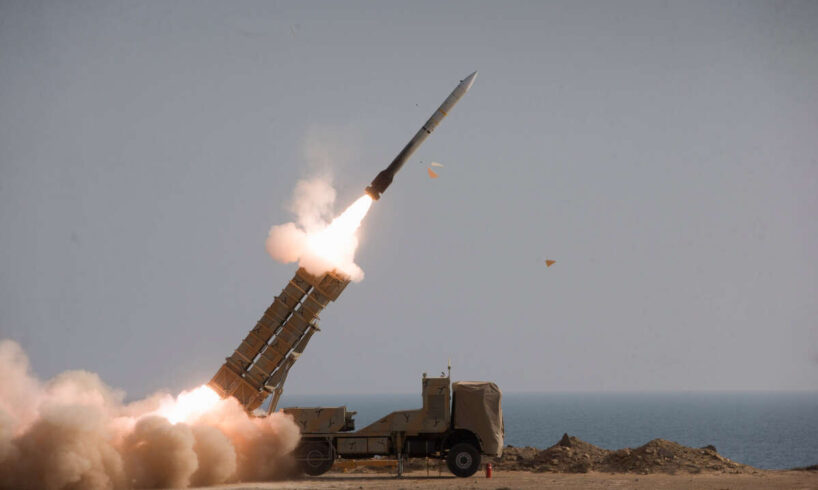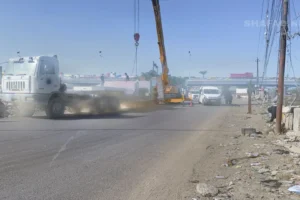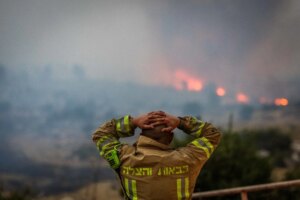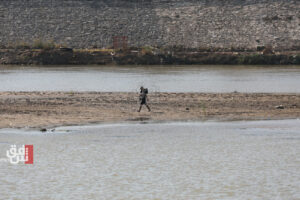
Iran’s systematic exploitation of vulnerabilities in Israel’s renowned missile defense network during the 12-day conflict in June has revealed that even the most sophisticated air protection systems can be compromised through tactical adaptation. The Wall Street Journal reported that Tehran’s success rate in penetrating Israeli defenses doubled from 8% to 16% as the war progressed, demonstrating how persistent adversaries can identify and exploit gaps in multilayered defense architectures.
The escalating effectiveness of Iranian strikes emerged through a comprehensive analysis of missile defense data compiled by The Wall Street Journal, drawing from think tanks based in Israel and Washington, DC Officials familiar with the conflict, according to The Wall Street Journal, indicated that Iran’s evolving strategy involved launching more advanced, longer-range missiles from diverse locations deep within Iranian territory, fundamentally altering the tactical landscape of the confrontation.
Israeli security forces and first responders gather at the site of an Iranian strike that hit a residential neighborhood in the Ramat Aviv area in Tel Aviv on June 22, 2025 (Jack GUEZ / AFP)
Tehran’s methodical approach to overcoming Israeli defenses involved significant changes in attack timing and geographic targeting patterns, sources told The Wall Street Journal. Rather than maintaining consistent overnight barrages, Iranian forces shifted to smaller daylight waves launched from a broader array of positions, effectively testing different vulnerabilities in Israel’s defensive grid.
The Iranian offensive strategy specifically targeted Israel’s multilayered defense system, which includes the Arrow 3 interceptors for exo-atmospheric threats, Arrow 2 for atmospheric interception, Terminal High Altitude Area Defense (Thaad) systems, David’s Sling for medium-range threats, and the Iron Dome for short-range projectiles. Each layer operates at different altitudes and ranges, creating what missile defense experts consider among the world’s most comprehensive protective networks.
Mora Deitch, head of the Data Analytics Center at the Institute for National Security Studies at Tel Aviv University, provided crucial data showing that Iran’s most successful attacks occurred on June 22, when 10 out of 27 missiles successfully struck Israeli territory. This represented a significant escalation from earlier phases of the conflict, when Iranian penetration rates remained considerably lower.
“Any missile system, even a sophisticated one like Israel’s, will leak eventually,” Raphael Cohen, a senior political scientist at Rand, explained to The Wall Street Journal. “The key for any air-defense system is less that you build a perfect system with any one layer and more the cumulative effect.”
The Iranian tactical evolution included deployment of hypersonic Fattah-1 missiles, which descend at sharp angles from outside Earth’s atmosphere at speeds exceeding 10 times the speed of sound. These advanced weapons feature detachable warheads capable of maneuvering to avoid interceptors, challenging only Israel’s most sophisticated systems like Arrow 3 and David’s Sling, which can adjust course mid-flight for tracking.
Rescue personnel work at an impact site following missile attack from Iran on Israel, in centra Israel, June 14, 2025 (Reuters / Ronen Zvulun)
Iranian forces demonstrated increasing sophistication by varying firing patterns, targeting geographically dispersed cities, and altering intervals between attacks. Yehoshua Kalisky, a missile-defense expert at the Institute for National Security Studies, noted that “They tried to separate the Israeli defense system,” describing how Tehran’s strategy aimed to overwhelm defensive capabilities through tactical dispersion.
Analysis of Israeli public statements revealed declining interception rates throughout the conflict. Officials initially claimed 90% to 95% interception rates during active hostilities, but post-ceasefire assessments acknowledged an overall 86% success rate, according to The Wall Street Journal’s review of military communications.
The Jewish Institute for National Security of America provided data showing that Iran’s breakthrough rate doubled between the conflict’s first and second halves. Ari Cicurel, associate director of foreign policy at the institute, concluded that Iran successfully adapted “how, when and what” it was firing, demonstrating systematic learning and tactical evolution.
Israel’s successful targeting of Iranian missile launchers prevented Tehran from deploying older, less accurate short-range systems, but this defensive success paradoxically forced Iran to utilize more advanced long-range weapons earlier in the conflict. This escalation brought hypersonic and precision-guided systems into play sooner than might have occurred under different circumstances.
The conflict’s implications extend beyond the immediate participants, particularly regarding President Donald Trump’s executive order establishing the $175 billion Golden Dome system for American missile defense. Originally named after Israel’s Iron Dome, this planned network faces the challenge of protecting significantly larger territory than Israel’s compact geography.
Ukraine’s ongoing conflict offers a different model for territorial defense, but its air protection relies on a patchwork of American, European, and domestic technologies rather than Israel’s integrated approach. Cohen emphasized that Israel’s unified system provides a better comparison for what the United States seeks to develop.
The Israeli strikes on Iran, June 2025 (AFP) AFP
Declining interceptor availability and high costs likely influenced Israeli targeting decisions as the conflict progressed, with defense officials conserving resources by prioritizing threats posing the greatest danger. This economic factor adds another dimension to the strategic calculus facing nations operating expensive missile defense networks.
Iranian missiles that reached Israeli airspace between June 13-24 showed clear patterns of increasing success, with the most significant breakthrough occurring during the final phases of the conflict. Fragments of Iranian weaponry discovered in West Bank settlements provided physical evidence of successful penetrations.
Both Israeli and Iranian officials have independently called for comprehensive reviews of their aerial capabilities following the conflict’s conclusion. Kalisky noted that “We are both on a learning curve,” describing how “they’re trying to improve their attacks, and we, our defense.”
The geographical distribution of damage points across Israeli territory, including areas near Tel Aviv and in the West Bank, demonstrated Iran’s ability to strike diverse targets despite Israel’s defensive efforts. Satellite data analysis revealed impact locations that highlighted the scope of successful penetrations.





